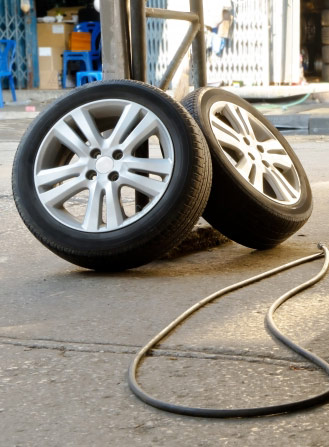When many of us think about the variables to consider when choosing a tyre, the tread, size and materials will often come to mind. However, an overlooked fact is the pressure within these devices. If the pressure is too high, you may risk a blowout while on the motorway. If it is too low, traction can be sacrificed and once again, the tyre could become damaged. It is still a fact that there are other areas which should be addressed. So, why is this pressure so critical?
Why is Pressure Important?
 The ability of tyre to negotiate different terrains is affected by its pressure. For instance, driving in sand dictates that a lower pressure be used than that required for surface streets. The same can be said when within snowy conditions. This arises from the fact that a lower pressure will enable more of the tyre to contact the surface. In turn, this offers greater traction and spreads the weight of the vehicle out over a larger area.
The ability of tyre to negotiate different terrains is affected by its pressure. For instance, driving in sand dictates that a lower pressure be used than that required for surface streets. The same can be said when within snowy conditions. This arises from the fact that a lower pressure will enable more of the tyre to contact the surface. In turn, this offers greater traction and spreads the weight of the vehicle out over a larger area.
Determining the Correct Pressure
You can easily find the correct tyre pressure in one of three ways. This will normally be listed in the driver’s manual of your vehicle. However, a great tip is to check the side of the tyre itself. Normally, you will note raised lettering with the correct figures. Rarely, it could even be written inside the fuel cap.
Driving Conditions
You have likely heard that different tyres are suited for specific driving conditions. Some of the common variants include all-weather models, snow tyres and those which are designed to be used on extremely wet roads. You could still find that you are suddenly driving over a great deal of snow or ice. As opposed to changing the tyres completely, it is possible to manually release air from the valves themselves. In turn, this will lower the internal pressure and provide higher levels of traction. So, it is clear to see that pressure makes a massive difference in terms of safety and performance.This topic can be a bit tricky to understand and it is never recommended to lower or increase tyre pressures without first consulting the owner’s manual or speaking with a trained professional.
